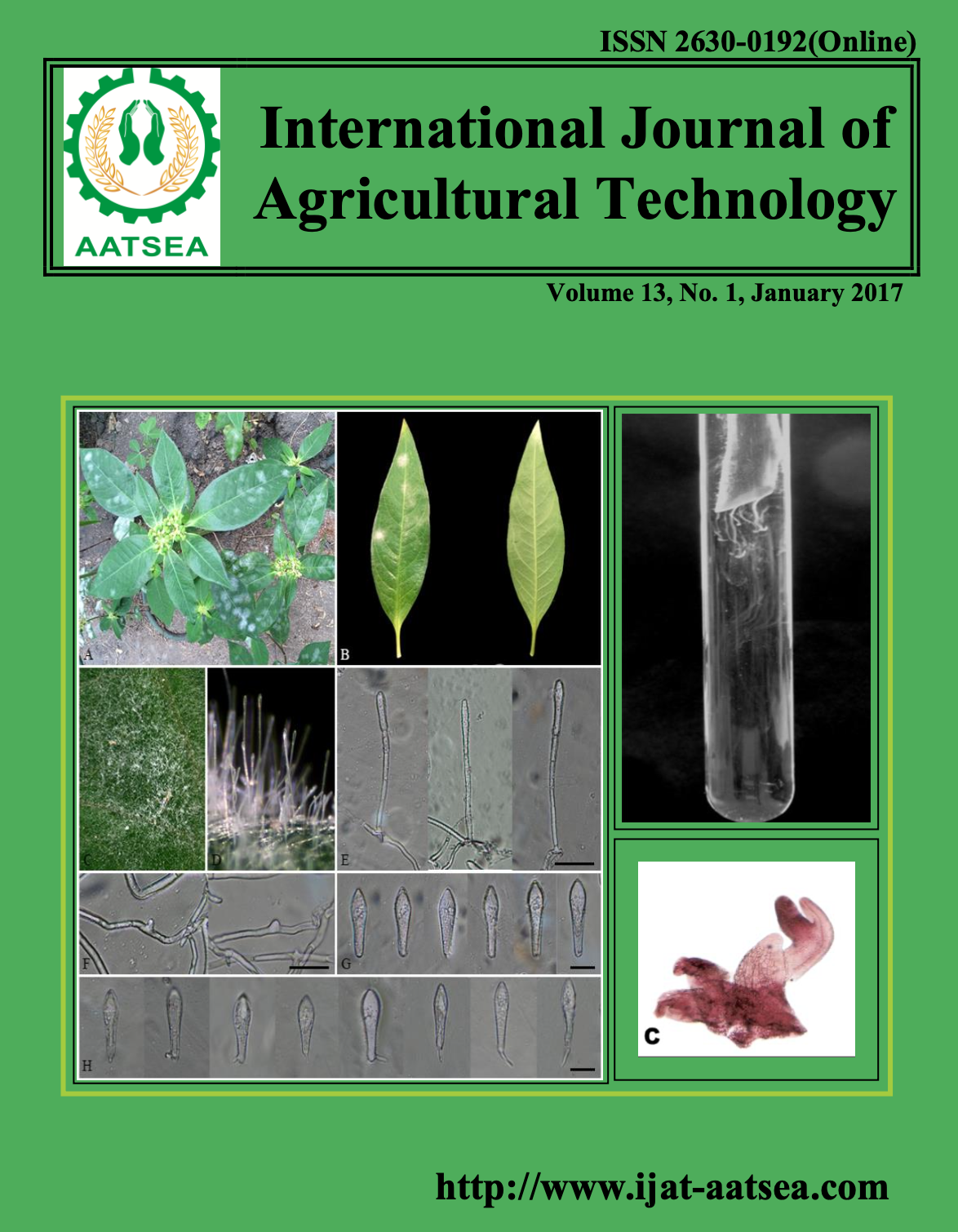Soil properties and response of spring onion to different levels of biochar
Main Article Content
Abstract
Article Details

This work is licensed under a Creative Commons Attribution-NonCommercial-NoDerivatives 4.0 International License.
References
Artiola, M. (2011). Biochar soil amendments to increase the water holding capacity of sandy, arid soil. State Water Resources Research Institute Program.
Cornelissen, G., Martinsen, V., Shitumbanuma, V., Alling, V., Breedveld, G. D., Rutherford, D. W., Sparrevik, M. Hale, S. E., Obia, A. and Mulder, J. (2013). Biochar effect on maize yield and soil characteristics in five conservation farming sites in Zambia. Agronomy 3:256-274.
Dugan (2011). Hydraulic Conductivity and Soil Water Retention of Soil-Biochar Mixtures. Rice University.
Fischer and Bruno (2012). Synergisms between compost and biochar for sustainable soil amelioration. Martin Luther University Halle-Wittenberg.
Gardeningr Patch (2005). How to grow spring onions. Available at http://www.gardeningpatch.com/vegetable/growing-onions.aspx.
Ganotisi, N. D., Cabalar, L. M. and Castro, R. C. (2005). Use of hydrophylic materials (CRH) to improve the productivity of sandy soils. Philippine Rice R and D Highlights 2004. PhilRice, Muñoz, Nueva Ecija.
Gomez, J. D., Denef, K., Stewart, C. E., Zheng, J. and Cotrufo, M. F. (2014). Biochar addition rate influences soil microbial abundance and activity in temperate soils. European Journal of Soil Science 65:28-39.
Hazelton, P. and Murphy, B. (2007). Interpreting soil test results: What do all the numbers mean? Australia: CSIRO Publishing.
Haefele, S. M., Konboon, Y., Wongboon, W., Maarifat, A. A., Pfeiffer, E. M .and Knoblauch, C. (2011). Effects and fate of biochar from rice residues in rice-based systems. Field Crops Research 121:430-4403.
Lehmann, J., Gaunt, J. and Rondon, M. (2006). Bio-char sequestration in terrestrial ecosystems – a review. Mitigation and Adaptation Strategies for Global Change 11:403-427.
Lehmann, J. and Joseph, S. (2009). Biochar for Environmental Management: Science and Technology. London: Earthscan Publications Ltd.
Masulili, A. Utomo, W. H. and Syechfani, M. S. (2010). Rice Husk Biochar for Rice Based Cropping System in Acid Soil 1. The characteristics of rice husk biochar and its influence on the properties of acid sulfate soils and rice growth in West Kalimantan, Indonesia. Journal of Agricultural Science 2:39-47.
Mukherjee, A. and Lal, R. (2013). Biochar impacts on soil physical properties and greenhouse gas emissions. Agronomy 3:313-339.
Ontario Ministry of Agriculture. Vegetable Crops Production Guide. Available at http://www.nr.gov.nl.ca/nr/agrifoods/crops/veg_pdfs/onions.pdf.
Sparkes, J. and Stoutjesdijk. (2011). Biochar: implications for agricultural productivity, Australian Bureau of Agricultural and Resource Economics and Sciences, ABARES.
Weyers, S. L. and Spokas, K. A. (2011). Impact of biochar on earthworm populations: A review,” Applied and Environmental Soil Science DOI: 10.1155/2011/541592.
Yong S. O., Ychimiya, S. M., Chang, S. X. and Bolan, N. (2016). Biochar: Production, Characterization and Applications. Florida: CRC Press.
Yuan, J., Xu, R., Wang, N. and Yu, L. J. (2011). Amendment of Acid Soils with Crop Residues and Biochars. Pedosphere 21:302-308.


